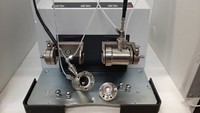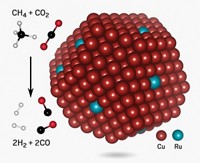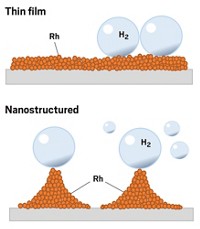Advertisement
Grab your lab coat. Let's get started
Welcome!
Welcome!
Create an account below to get 6 C&EN articles per month, receive newsletters and more - all free.
It seems this is your first time logging in online. Please enter the following information to continue.
As an ACS member you automatically get access to this site. All we need is few more details to create your reading experience.
Not you? Sign in with a different account.
Not you? Sign in with a different account.
ERROR 1
ERROR 1
ERROR 2
ERROR 2
ERROR 2
ERROR 2
ERROR 2
Password and Confirm password must match.
If you have an ACS member number, please enter it here so we can link this account to your membership. (optional)
ERROR 2
ACS values your privacy. By submitting your information, you are gaining access to C&EN and subscribing to our weekly newsletter. We use the information you provide to make your reading experience better, and we will never sell your data to third party members.
Sustainability
Solar-powered reactor converts CO₂ and water into jet fuel
This solar tower fuel plant could pave the way for more sustainable aviation fuels
by Krystal Vasquez
August 1, 2022

A pilot-scale solar fuel reactor outside Madrid can produce jet fuel from two simple ingredients: carbon dioxide and water (Joule 2022, DOI: 10.1016/j.joule.2022.06.012). Kerosene made with this process, which is powered by heat from a solar concentrator, could serve as a drop-in replacement for fossil fuels.
The aviation industry is currently responsible for roughly 3% of global greenhouse gas emissions. Switching to sustainable aviation fuels could greatly minimize the sector’s climate impact. Yet, despite major advances in creating the kerosene precursor syngas sustainably in the lab, making these complex processes work at industrial scales has been challenging.
The new process, developed by a team of researchers at the Swiss Federal Institute of Technology (ETH), Zurich, uses concentrated sunlight to heat and thermochemically oxidize CO2 and water, producing syngas with the help of a cerium oxide catalyst. The syngas is then converted into kerosene using well-established processes. ETH Zurich engineer Aldo Steinfeld and his team built a concentrator system that uses 169 solar-tracking mirrors to beam sunlight into a 16 cm pinhole in the reactor. To maximize its exposure to the light, the researchers placed the reactor atop a 15 m tower and angled it slightly downward.
The reactor is about 12 times larger than the one the team had previously tested in the lab. When the pilot plant was operational, it was also more efficient than earlier versions, converting 4% of the energy of the incoming heat into syngas, up from less than 2% in some previous prototypes. The overall plant efficiency also depends on the efficiencies of the mirrors and the syngas-to-kerosene conversion process, which weren’t the focus of this work, says Erik Koepf, the R&D technical manager at the DuPont Silicon Valley Technology Center. Koepf worked on this project as a staff scientist at ETH Zurich.
Jing Gu, a professor of inorganic chemistry at San Diego State University, says this pilot demonstration of the solar fuel technology at a scale close to industrial operation shows the technology is not so far away from real-world implementation. What’s more, Gu says the ETH team’s data could serve as a benchmark for other sustainable syngas systems to determine whether they’re ready to be scaled up.
As for the economic feasibility, however, Steinfeld says 4% efficiency is still too low to be economically viable for industrial use, but he expects to bring it up to a more practical 15% by further optimizing the system. One solution is to add a heat-recovery system, which has the added benefit of avoiding any operation lapses due to shadows or passing clouds. “Stored heat can be used to drive the thermochemical process 24/7 round-the-clock,” says Steinfeld.
CORRECTION
This story was updated on Aug. 2, 2022, to correct the spelling of a name and a researcher's affiliations. The engineer at the Swiss Federal Institute of Technology (ETH), Zurich, is Aldo Steinfeld, not Aldo Stanfield. Erik Koepf is R&D technical manager, not the applications engineering laboratory director, at the DuPont Silicon Valley Technology Center. And Koepf was a staff scientist, not a postdoctoral researcher, at ETH Zurich when he worked on the project.





Join the conversation
Contact the reporter
Submit a Letter to the Editor for publication
Engage with us on Twitter